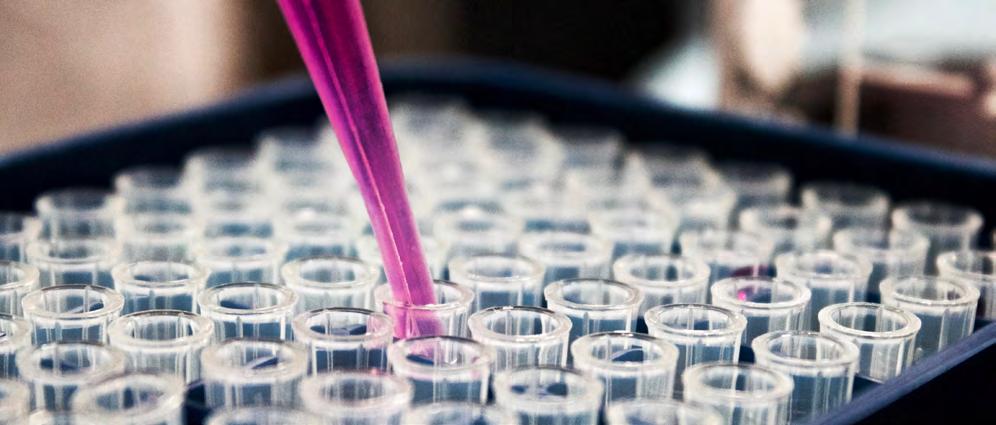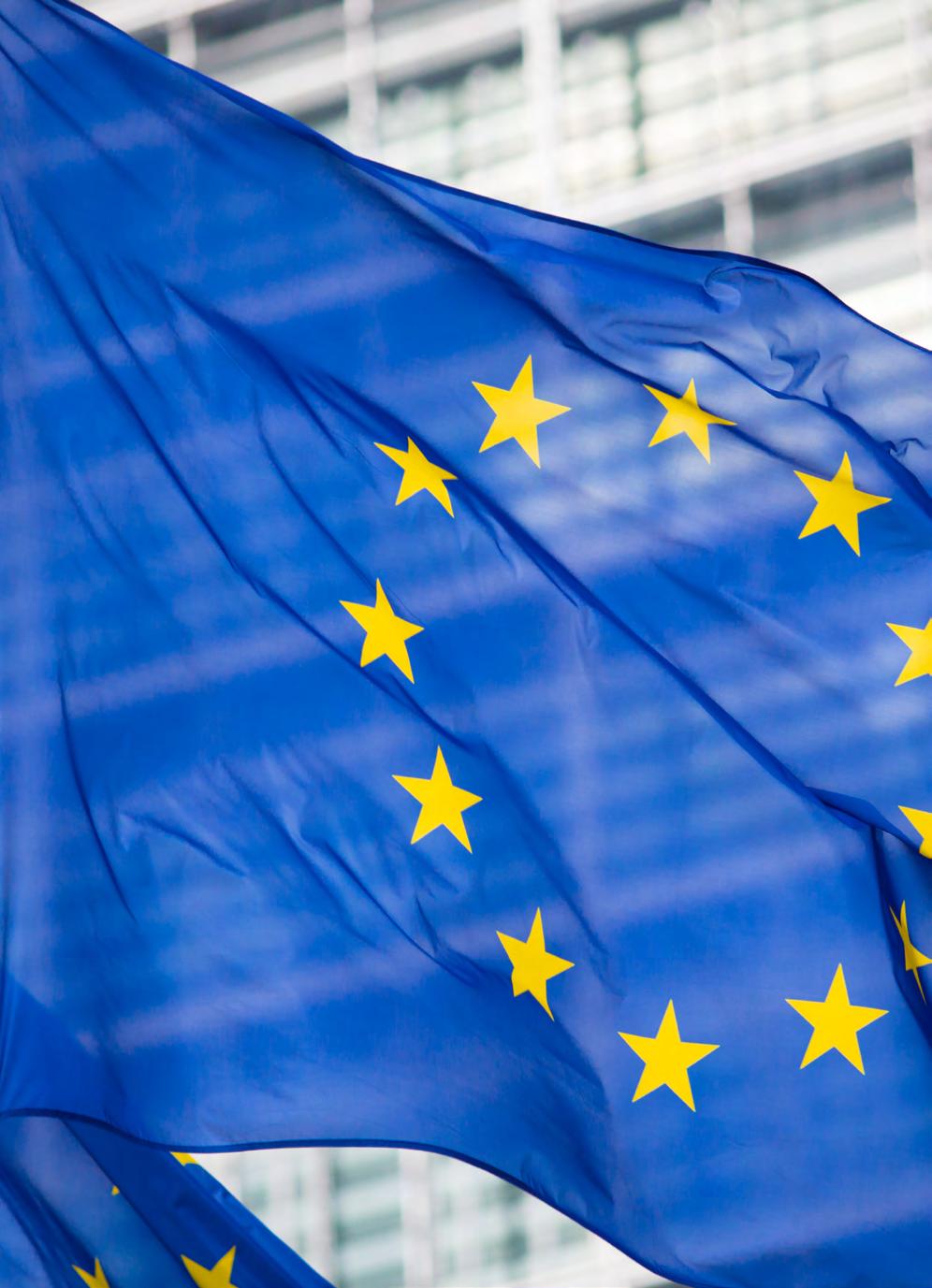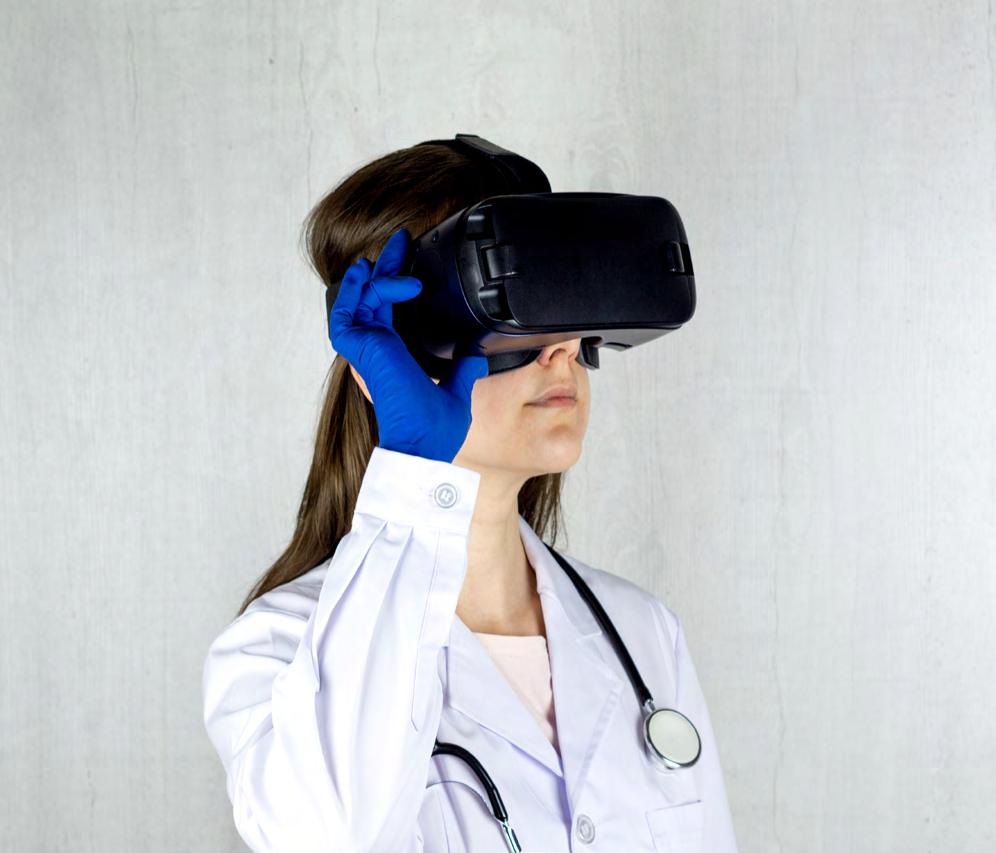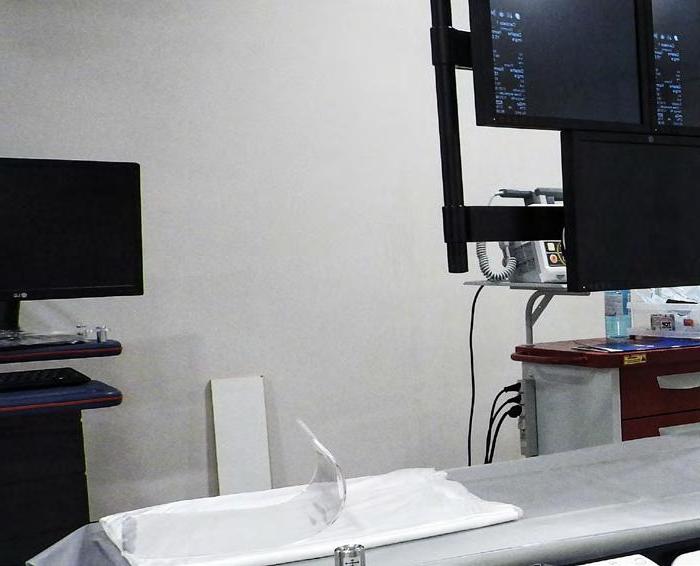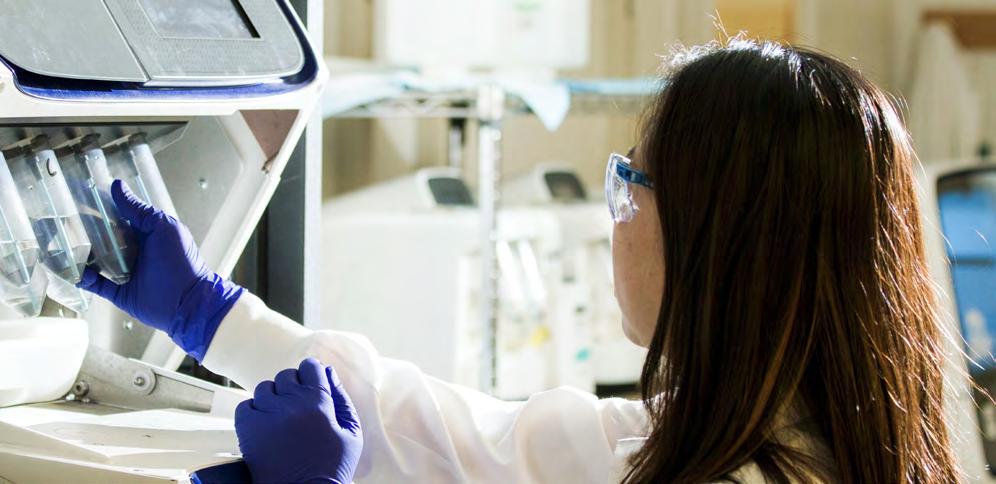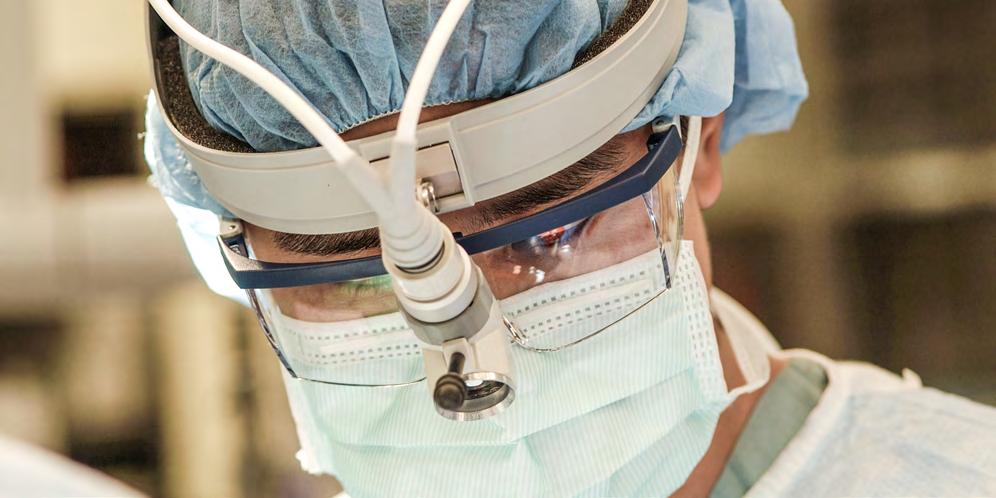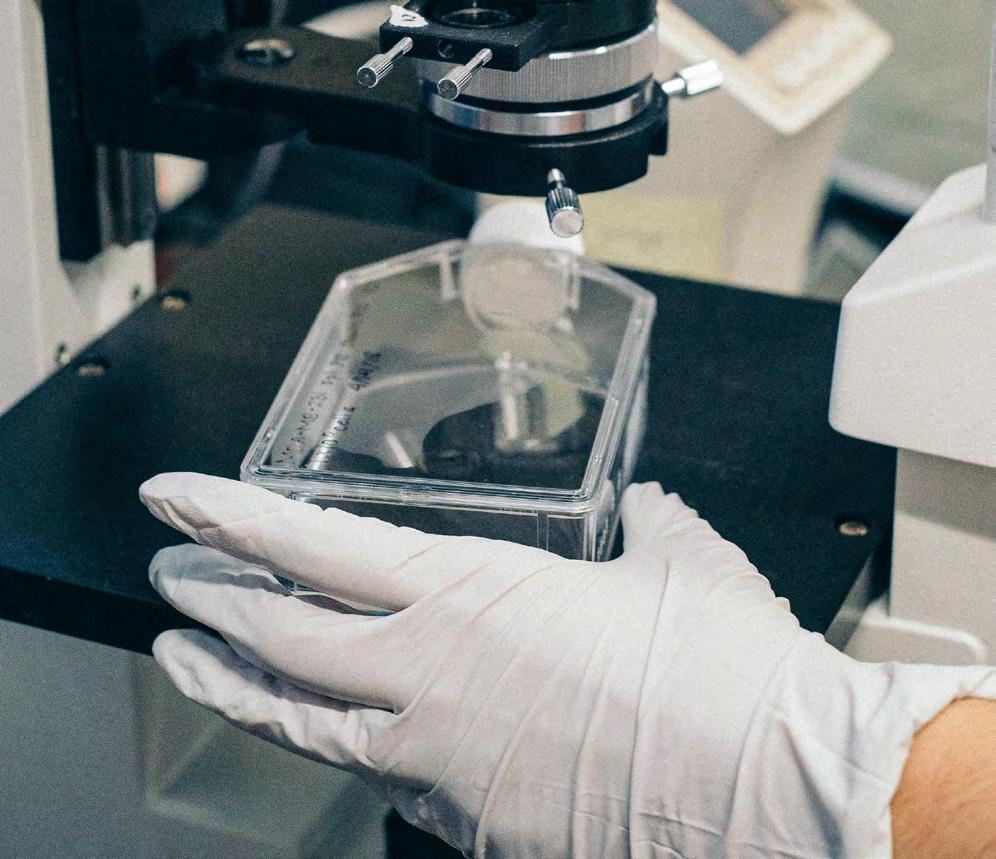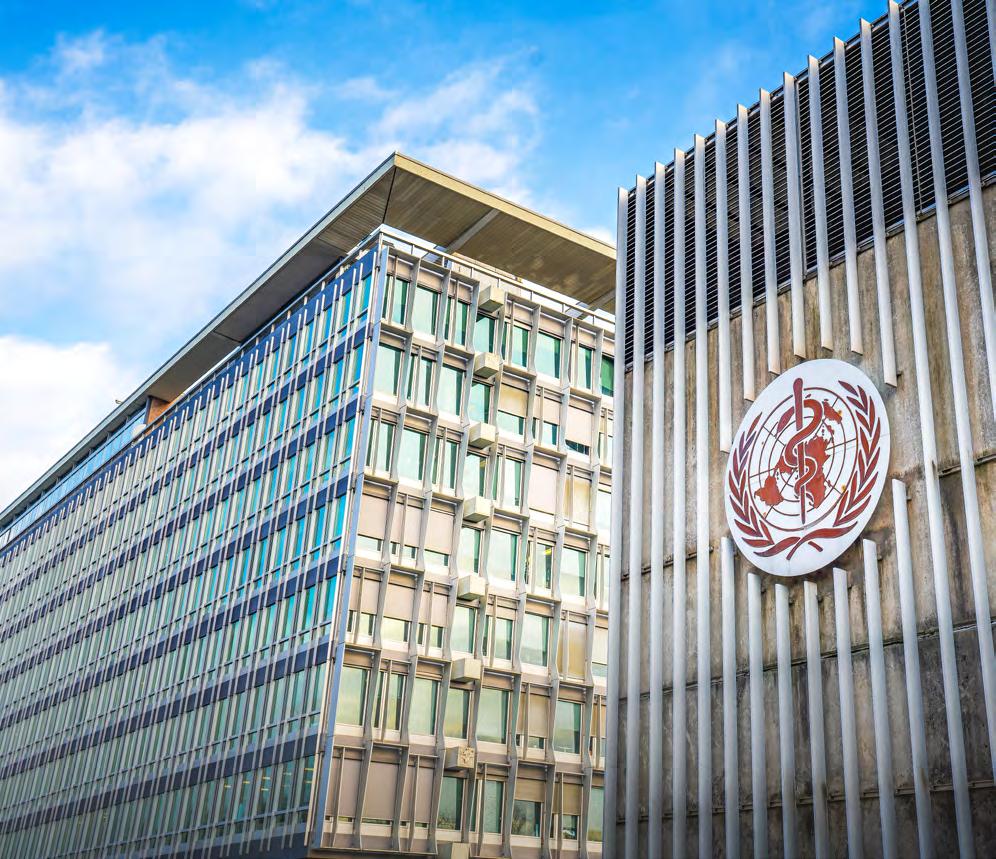
7 minute read
06 Intensify dialogue on IPR in health care
06
Intensify dialogue on IPR in health care
Intellectual property Regulations
Ensure intellectual property protection and proper implementation
Protecting intellectual property is key when building an innovation-driven economy. And for a large proportion of health care companies, intellectual property rights (IPR) are the foundation of their business models. They ensure that developers and manufactures have an incentive to invest the significant resources required to develop innovative products. To ensure sufficient incentives for these risky investments, patents provide a time-limited right to exclude others from making, using, or selling an invention. This is particularly critical for sectors with long innovation cycles that require large and risky investments. In some cases, such as in the pharmaceutical sector, these cycles normally take eight to twelve years 110 . According to some sources, drug
110 Bundesverband der Pharmazeutischen Industrie, Pharma-Daten 2019, 11.2019, p. 13, <https://www.bpi.de/fileadmin/user_upload/Downloads/Publikationen/
Pharma-Daten/Pharma-Daten_2019_DE.pdf>. R&D across all therapeutic areas takes on average even 14 years. 111 In addition, patent rights are granted for 20 years, beginning at the time the application is filed. Given that filing a patent is required in the earliest days of discovery, the term of protection during which the product can be marketed for pharmaceuticals is often less than half of the total patent term. If that is not the case, for example, supplemental protection certificates or similar mechanisms compensate for some time. Furthermore, although IP protection is for a limited time period, the benefits are long term, and the goal of patent law is to transfer innovation to the public by making the details of patented inventions broadly available. It does so by requiring a patent application to contain information that is sufficient to enable any “person skilled in the technological area to which the invention pertains
111
… to make and use the [invention].” 112 This contrasts to other forms of IP protection, such as trade secrets, which can allow companies to not disclose such information. Critically, this disclosure serves an important societal purpose. Because the information has been made available, a patent in any given field draws on the existing body of scientific knowledge. At the same time, it adds to it in a way that others may use and benefit from in their own research.
Core challenges:
.Enforcement: There needs to be stricter enforcement of existing intellectual property rights in China. While
IP protection offers potential for further improvement, some progress has been made on IP legislation in the health sector. Enforcement needs to be tightened, however, and some legal mechanisms need to be strengthened. To prevent intellectual property violations, these include faster injunction procedures and more effective enforcement of claims for damages that have a genuine deterrent effect. The recently published 2020–2021 IP Action Plan and China’s
People’s Court Opinion therefore are welcome signs and measures to strengthen IP enforcement. The IP
Action Plan from China’s National Intellectual Property Administration (CNIPA) was released on April 20, 2020 113 . With its 133 forthcoming measures, it is designed to implement the CPCCC / State Council
November 2019 Opinions on Strengthening IPR Protection and to serve as China’s IP implementation plan under the Phase One trade agreement. In addition, the
People’s Court Opinion released on April 21, 2020 114 called for “comprehensive strengthening of judicial protection of intellectual property rights”, including a call to safeguard the legitimate rights and interests of the rights holders, enhance practical effects and effectiveness of judicial protection, and strengthen trial infrastructure.
112 United States Patent and Trademark Office, General Information Concerning
Patents, <http://www.uspto.gov/patents-getting-started/general-informationconcerning-patents#heading-12> (accessed on 17.07.2020). 113 Chinese National Intellectual Property Administration, Action Plan to Accelerate
Building IP Powerhouse, <http://www.cnipa.gov.cn/zscqgz/1147678.htm>. 114 People’s Court Opinion on strengthening IP laws from April 21st2020,https:// mp.weixin.qq.com/s/CNFz2Erjt0Q6pGt1XvbgHw
The current state of IP protection varies across sectors:
Examples from the pharmaceutical sector: The Chinese government is strengthening the incentive system for the pharmaceutical sector and has proposed positive reforms to IPR 115 , which now need to be implemented and enforced. Patent term extension (PTE), regulatory data protection (RDP), and publication of an Orange Book in particular are generally positive proposals. The Orange Book is a list of drugs that the U.S. Food and Drug Administration (FDA) has approved as both safe and effective. It contains information on patent and regulatory exclusivities pertaining to a product. In addition, discussion of a patent linkage system is a step in the right direction. Meanwhile, ongoing works on Chinese patent law and implementation preparation for the US-China Phase I Agreement, the IP Action plan published in April 2020, foresee 133 concrete measures. These include: revising the patent law to strengthen pharmaceutical patent protection and provide patent term extension; revising the Patent Examination Guidelines to permit applicants and patentees to provide supplemental data (during patent application prosecution as well as during invalidation proceedings), and establishing an early resolution mechanism for pharmaceutical patent disputes by October 2020. From a pharmaceutical perspective, it is important to determine a clear timetable for introducing implementation rules for PTE and RDP, and protection standards. For RDP protection, in particular, China so far has still not fully implemented its prior commitments. For some innovative drug products, it had not provided the six-year protection period of RDP against unfair commercial use for clinical testing and other data that it committed to at its WTO accession in 2001. Another challenging situation is that generic companies are able to obtain marketing authorizations before patent expiry, whereby generic companies launch generics
115 Among those were in May 2017, the former CFDA´s draft document Encourage
Innovation of Drugs and Medical Devices, Rights of Innovators (Document No. 55). In October 2017, the Central Committee of the CPC and the State Council jointly published the document Opinions on Deepening the Reform of Evaluation and Approval to Encourage Innovation of Drugs and Medical Devices (Opinions).
In April 2018, the State Council called for extending patent protections by a maximum of five years if a manufacturer applies for parallel registration for its innovative drugs in China and abroad. In April 2018, the NMPA published the draft Regulations on Protection of Drug Study Data for public consultation. In
January 2019, the NPC released draft amendments to the Patent Law—which includes PTE for invention patents of innovative drugs—for public comment.
at risk, but no effective legal means are at hand for the rights holder, because injunctions are not available on short notice and not provisionally enforceable. They are only enforceable when the second instance has passed its sentence.
–Examples from the MedTech sector: Major challenges remain in other sectors, such as medical devices, with a lack of proper enforcement of existing intellectual property rights. Counterfeit medical devices still violate the IPR of many medical device manufacturers, stifle innovation, and prevent provision of high-quality health care.
Implementation and consultation: To ensure the practicability of new measures, proposed IPR should be implemented swiftly and in consultation with industry partners.
Future-proof IPR: Intellectual property rights in China should be updated to reflect the requirements of new technologies such as AI, Big Data, and biometrics. As China has announced the amendments to Patent Examination Guidelines related to AI inventions, effective as of February 1, 2020, health industries should now be given the opportunity to comment on accompanied implementation work. The Chinese government should proactively include the health industry to ensure that all relevant technological development in the health sector is sufficiently considered.
Forced technology transfer: De facto forced technology transfers often happen through joint-venture requirements, licensing, or approval processes. With increasing digitization, China’s restrictive cyber security regulations are of particular concern in this respect. China’s new foreign investment law (2019) specifically bans forced technology transfer (Article 22). However, the provisions in the law are not specific, and article 57 of the draft bio security law 116 opens the door to a forced technology transfer. The Chinese government should devise detailed regulations in order to prevent forced technology transfers.
Evaluation
The health care industry is encouraged by recent policies that incentivize innovation and strengthen IPR protection. Establishing a truly innovation-friendly environment, however, requires a functioning multi-level protection mechanism that enforces existing IPR.
Recommendations on Intellectual Property Rights:
Elaborate clear IPR implementation rules, for example for PTE and RDP, and refine standards to match EU standards on RDP (8+1+1); establish that patent infringing products are not traded on the market, for example through an effective patent linkage system.
Enforce existing IPR more consistently and strictly
and strengthen specific rule of law mechanisms such as injunction procedures.
Review policies that indirectly cause forced tech
nology transfer and ensure that they reflect rapid technological advances.
Increase opportunities for industry to participate
in the policy making process and contribute to formulating and implementing IP protection laws and regulations.
116 Chinalawtranslate, Biosecurity Law (Draft) (Second Deliberation Draft), <https:// www.chinalawtranslate.com/en/biosecurity-law-draft-2/> (accessed on 17.07.2020).

